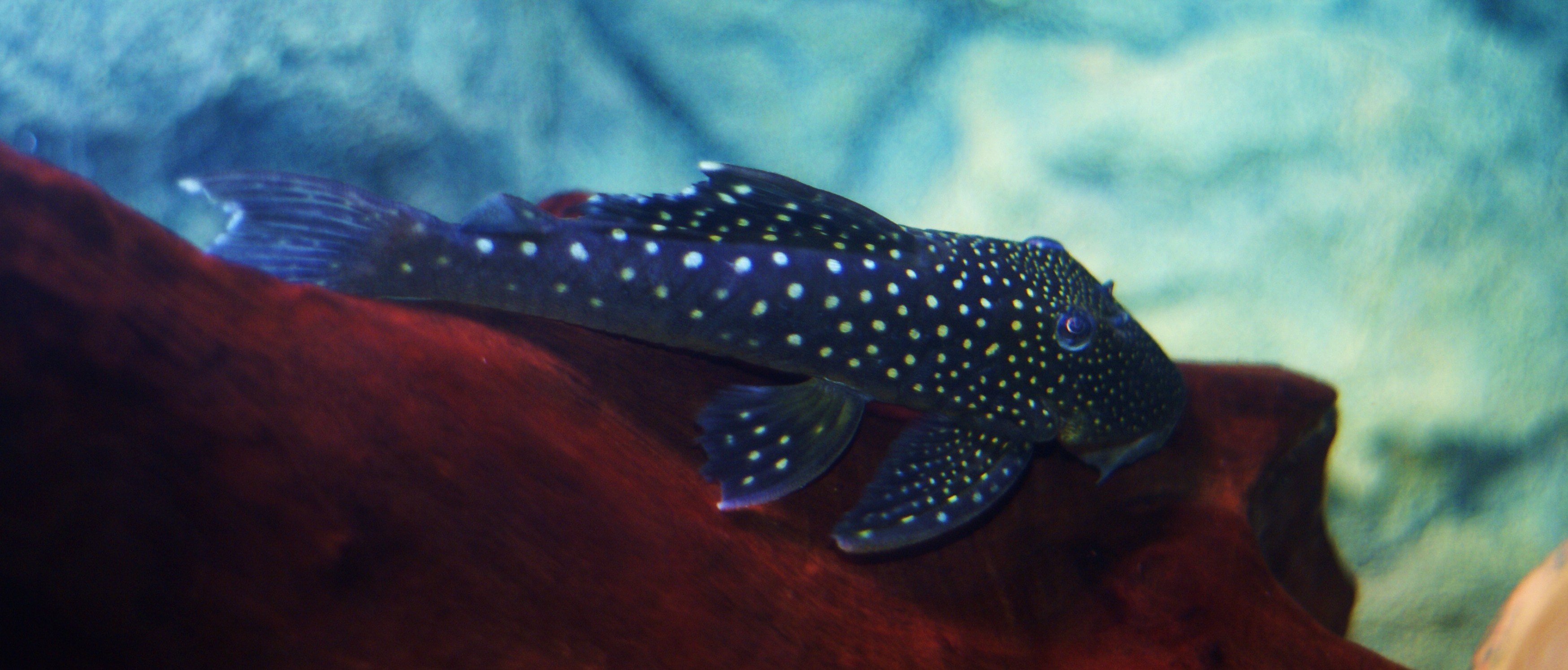All, Fish Facts, Tropical Facts
Plecostomus (Suckermouth Catfish)
Experience level: Beginner
Latin Etymology: “Plecostomus” – ‘Folded Mouth’
Max size: 24 Inches (60.96cm)
Minimum Tank Size: 208 l (55 gal)
Temperament: Peaceful
PH Range: 6.5-8.0
Hardiness: Very Hardy
Sex Differences: Male – thick stub protruding from undercarriage. Female – stub recessed or flat against body.
Temperature: 66.0 – 79.0 F (18.9 – 26.1 C)
Average Lifespan: 15 years
Diet: Omnivorous (Primarily Algae)
Feeding Instruction: Lots of natural algae growth is important. Supplement this with sinking algae pellets and vegetable foodstuff on occasion (cucumber, lettuce, peas, blanched spinach). Will take usual tropical flake food sometimes but diet is principally plant matter.
Aquarium Care: Good filtration and frequent water changes are crucial due to the amount of waste this catfish produces. We’d recommend a partial water change of at least 15% once a month, more so if the water is significantly fouled.
Interesting Behaviour: Good fish for a community when young but tends to become very territorial against own species when it grows older. Suckermouth catfishes have been known to remove slime from fish such as discus, angelfish and goldfish when they don’t have enough protein in their diet. This can be prevented by providing the catfish with sinking high-protein bottom feeder pellets.
Breeding: Although usually very difficult to breed in captivity, this has been accomplished in Singapore, Hong Kong and Florida in large breeding vats. A key element of their mating process is a muddy riverbank with which they can burrow and lay eggs. After spawning hundreds of eggs, the males will guard them and the fry as they grow and feed off the mucus layer of the father’s body.
Origin: The common Suckermouth Catfish or Hypostomus Plecostomus was first discovered in South America in 1758 but have been known to inhabit ponds, estuaries and rivers of both brackish and freshwater on both the Pacific and Atlantic Slopes.
There are over 130 Hypostomus species alone, not including the variety of other Plecostomus species, some of which science itself has not described. Suckermouth Catfishes are found in such diversity and rate that they are now given ‘L’ numbers as identification. As of now, we are aware of at least 500 different species of Suckermouth Catfishes. The term ‘Pleco’ or ‘Plecostomus’ is often thrown around to refer to any of these Catfishes.



